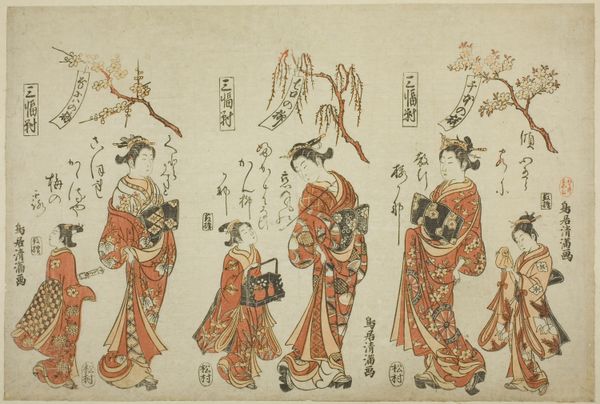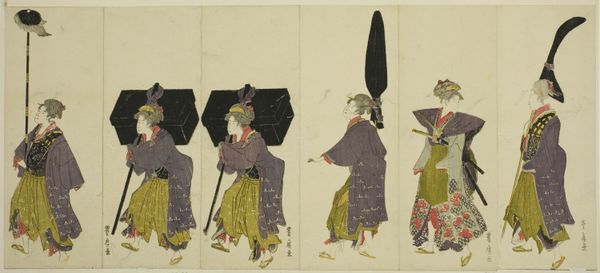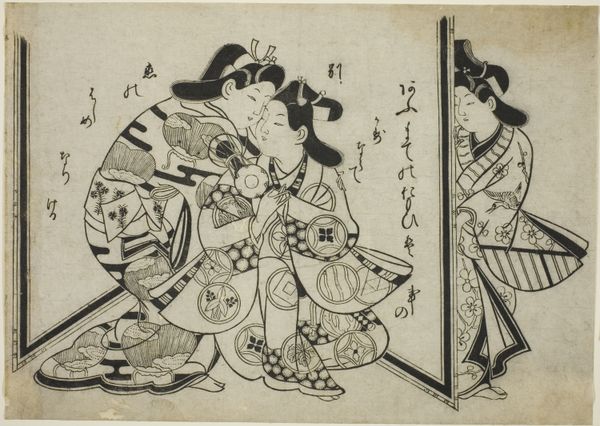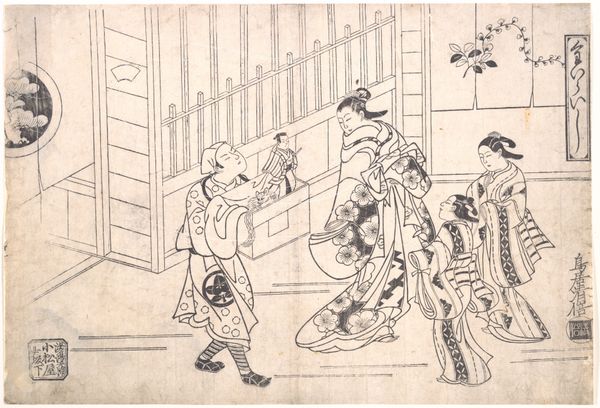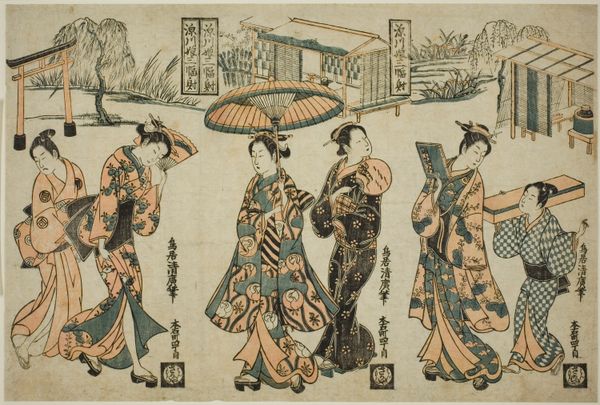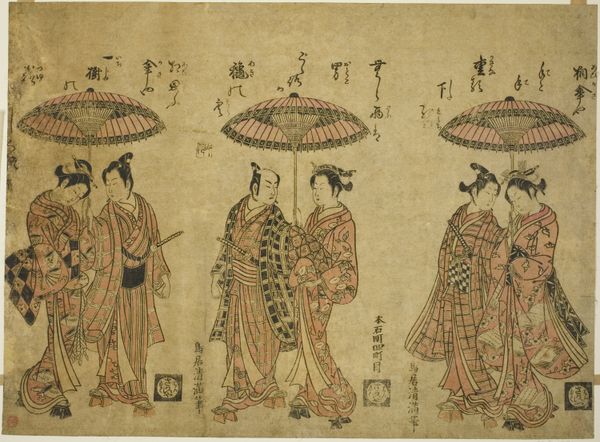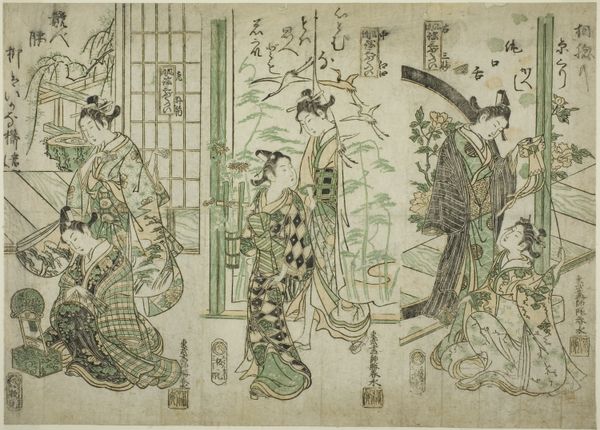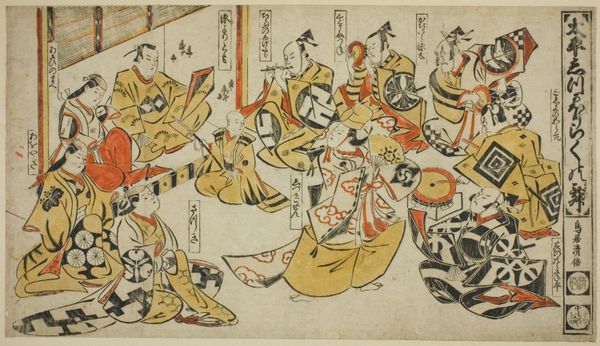
The Actors Sanogawa Ichimatsu (right), Nakamura Kiyosaburo (center right), Sanogawa Senzo (center left), and Nakamura Kumetaro (left) c. 1750
0:00
0:00
print, woodblock-print
#
portrait
# print
#
asian-art
#
ukiyo-e
#
woodblock-print
Dimensions: 11 3/4 × 17 in.
Copyright: Public Domain
Editor: So, here we have Ishikawa Toyonobu’s "The Actors Sanogawa Ichimatsu, Nakamura Kiyosaburo, Sanogawa Senzo, and Nakamura Kumetaro," a woodblock print from around 1750. The patterns in the robes are so intricate and the colors are so muted. It's beautiful, but I'm not entirely sure what to make of it beyond that. What do you see in this piece? Curator: This work gives us a fascinating glimpse into the social dynamics of 18th-century Japan. These aren’t just actors; they’re celebrities, and their depiction speaks volumes about the relationship between performance, identity, and societal expectations. The fact that these are men playing women's roles—a common practice in Kabuki theatre—further complicates the reading. How does that layer of gender performance resonate with you? Editor: Well, knowing they are men playing female roles adds an interesting layer. The subtext, even today, around men performing femininity… it raises so many questions about how gender is perceived. The way they’re almost uniformly demure, though. Was that the performance? Or expectation? Curator: Exactly! Ukiyo-e prints like these were consumed by a broad audience, acting as both records and advertisements. Consider the cultural power these actors held, and how prints like these reinforced, or perhaps even challenged, social norms. Notice the details: the family crests, the props. What stories might these tell about the roles they played and the audiences they captivated? And perhaps more importantly, how did those performances impact perceptions of gender and identity outside the theater? Editor: It makes you wonder if these images offered a space to explore gender fluidity, even if unintentionally, for both the performers and the audience? Thank you. That gave me so much more to think about than just 'pretty patterns'! Curator: Indeed! Art like this allows us to examine the construction of identity through performance and representation, prompting critical reflections on the ever-evolving dynamics of gender, power, and society.
Comments
No comments
Be the first to comment and join the conversation on the ultimate creative platform.
